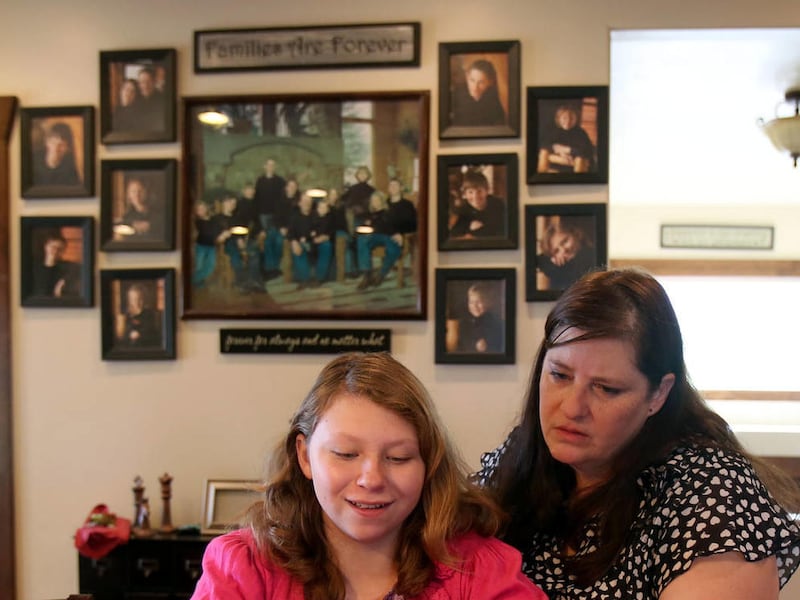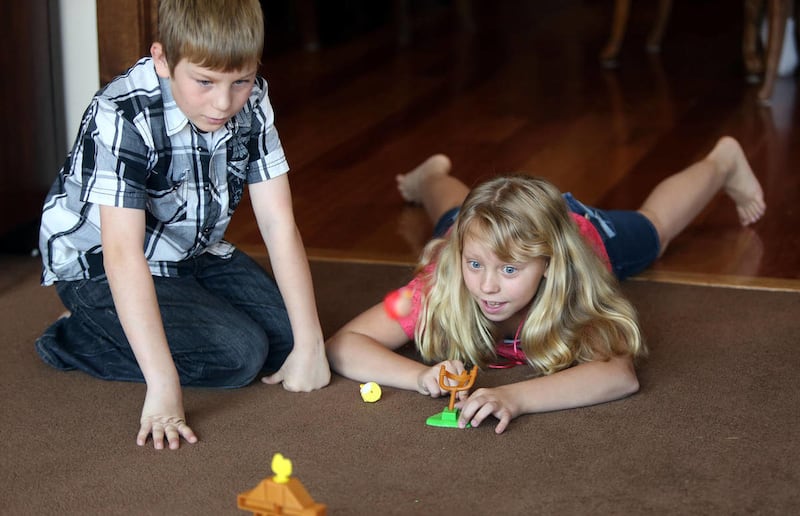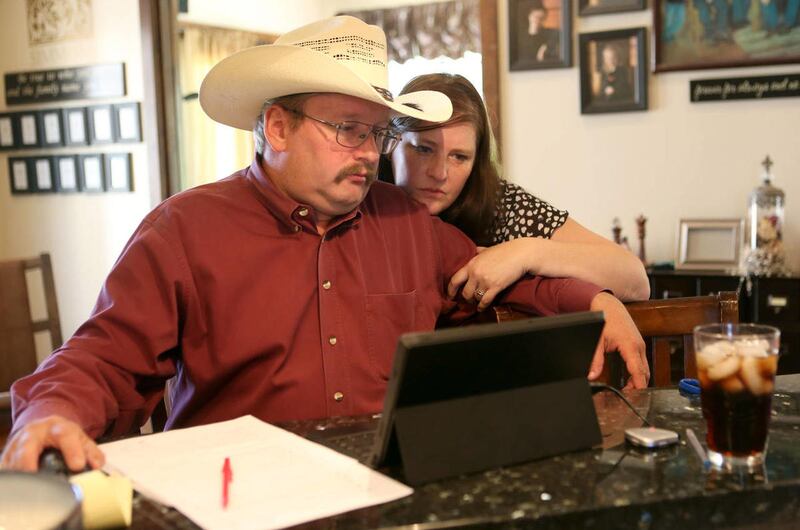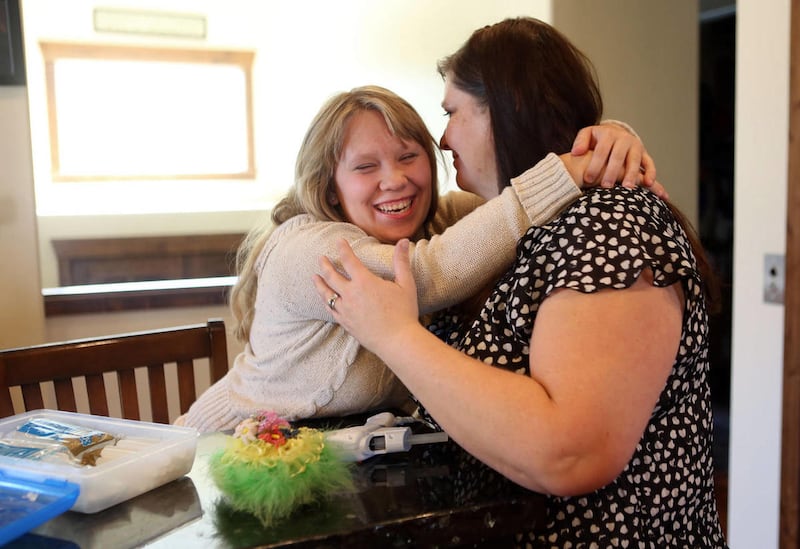You really have to put kids front and center, and you really have to mean it. That's not easy. Once you start acknowledging these realities, you spend dollars differently. You don't throw out the baby with the bath water, which is what we have done in some countries. The solutions, I think, are less blanket solutions. Blanket solutions are less child-friendly than more tailored solutions. – dam Pertman
Judy Miller and her husband knew they wanted to adopt long before doctors told her their first biological child would be their only biological child. They began researching adoption agencies and felt drawn to adopting from China.
Nine months after settling on an agency, Miller and her husband traveled to China to pick up their daughter. Six months later, they adopted a second. They later adopted a son from Guatemala.
If that sounds relatively fast and simple, it was. Parents who seek international adoptions today face a more difficult experience than the Millers did.
"The processes take much longer," said Miller, an author and educator who works with adoptive parents. "I understand why, but yet the length of time... and the expenses have more than doubled."
Many like Miller say the increasingly complex, lengthy and expensive process has caused the dramatic decline in international adoptions by American parents. The popularity of international adoption increased rapidly among American parents up to 2004. That year, Americans adopted nearly 23,000 children from other countries. Since then, however, adoptions have decreased by about 62 percent, to 8,668 last year, according to U.S. State Department numbers.
Transparency, for better or worse
There are many factors behind the decreasing number of international adoptions, but Adam Pertman, executive director of the Donaldson Adoption Institute, places them all under the same heading: transparency.
When the number of international adoptions was growing, part of the appeal was the relative ease with which international adoption occurred. American families that might have waited months or years to adopt from inside the United States looked to other nations for a simpler, faster solution. However, the lack of oversight had its share of drawbacks.
"Americans were running to Romania and literally picking up kids off the street," Pertman said. "It was like the Wild West."
The popularity of international adoptions eventually drew public scrutiny, and when it did, few liked what they saw. Stories of abduction and human trafficking emerged.
Much of this corruption resulted from demand for infants, said John Simmons, a father of nine adopted and biological children, who writes about adopting a large sibling group from Russia. Agencies had a motive when they spoke to birth mothers — they stood to make money if she gave the infant up for adoption. Some were coerced, mothers told the separation would not be permanent, that the child would be sent to America for an education, and then would return home. However, international adoptions are final almost immediately. Domestic adoptions from foster care, on the other hand, require a six-month minimum waiting period, during which the mother might change her mind about giving up her child.
"People are finally seeing the ugly side of this," Simmons said.
Concern about the potential for corruption in international adoptions led to the Hague Convention on Adoption, which called for global standards for international adoptions. Individual countries could establish rules that were strict or minimal, as long as they complied with it, said Susan Cox, vice president of policy and external affairs for Holt International Children's Services, which helps Americans adopt from 12 countries. The Hague Convention's targets were international adoptions that are "unethical, improper or illegal, wherever they occurred," she said.
Countries that were especially notorious for corruption — such as Guatemala, a country that frequently topped the charts for most children adopted by Americans — can no longer participate in international adoptions with countries that accept the standards, including the United States. They don't qualify.
Some adoption advocates, including Miller, call the Hague Convention perhaps the single-largest factor behind the decrease in international adoptions. The single-largest decline too, when international adoptions fell from more than 17,000 children to 13,000 in a single year.
However, it is also telling that the number of children and teens adopted internationally has remained relatively stable since 2004. When international adoptions are broken down by age, only two categories show marked declines — school-aged children and infants under a year old. That largely reflects changes in countries' own policies to allow only domestic adoptions of healthy young children.
Miller worries about children whose chances of adoption have decreased because their home countries don't comply with the Hague. "There are just so many children who don't have families, and it makes me hurt, all the time," she said. "I think about the children left behind, and I pray."
Still, Simmons sees a bright side. When children are being sold, infants are usually the victims, and the decreased availability of infants may encourage a couple to adopt an older child, as he did.
"A 5-year-old is more tired of waiting for a family than you are of waiting for a baby," he said.
Foreign policies keeping kids home
While the Hague is certainly a factor behind the decline, Pertman doesn't believe it is the sole force driving international adoptions down. Top countries such as China put new policies in place in an effort to keep their children home. Other countries made other changes. For example, last December Russian president Vladimir Putin announced that Americans would no longer be able to adopt Russian children, although adoptions that were already to a certain stage in the process could be completed.
The international adoption process has always varied according to the child's country of origin. When Miller adopted her daughters from China, little participation from the parents was needed. She and her husband put in their papers through an agency and heard next to nothing until they received notice they had been selected to receive a daughter. The couple flew in with a group of other adoptive parents and picked up their daughter within hours of arriving. They remained in China for two weeks while the adoption was processed.
When she adopted from Guatemala, Miller received photos and information about her son within days of his birth; he had not even been named. The agency offered to introduce Miller to the birth mother.
Americans can no longer adopt from Guatemala because it fails to comply with Hague regulations. China has put up barriers that increase the length of the international adoption process to between three and five years. Infants in particular, Pertman said, are saved for domestic adoptions in China.
That's one harsh reality of adoption, Simmons said. Parents' high preference for healthy infants limits their availability internationally.
"There's always a home for newborn babies," he said, "and almost always in country."
Still, if foreign countries desire to take care of their own kids, "that's a positive," Pertman said. "We don't need children to be adopted to other countries, we just need them to be in stable homes."
The children most likely to be available for international adoption are those with special needs, older children or even sibling groups, Cox said. Dark skin can make one what she called "a waiting child," available for adoption. The United States, too, allows adoption of American children by foreign families if willing American parents aren't found. Black biracial American newborns, for example, sometimes find new homes in Canada, Israel and Europe.
You can still adopt
Families that hope to adopt internationally have more likelihood of success if they are open to possibilities, Cox said.
"If you say you want a healthy child as young as possible, it's going to be difficult. If you are open to a child with special needs — and that can be all across the map, from severe to something not so difficult — it opens up," she said.
Families that reject the idea of a "special-needs child" are often very amenable to considering a child with a correctable medical condition. Often, it's the same child, Cox said. Special needs means many things. That's why it's important to work with an agency or organization that will learn as much about a child as possible and share it with families so they can make realistic choices. That includes knowing if the group has people in that country who, even if they can't get in to see specific children, know how an orphanage treats the children, whether they have access to medical treatment and more.
Would-be adoptive parents who want a healthy child will be assigned one, if it's even possible. With special-needs children, parents typically get to look at pictures and read profiles and find out about the child's abilities or limitations in order to make decisions about what they can handle and expect, Cox said.
Successful international adoptions start with research, she said. She recommends the State Department's website, Adoption.state.gov, which is neutral and fact-based. It tells what countries are open to adoption by American parents, and what types of children are available, rules and more. Importantly, it provides a list of questions to consider in selecting an agency with which to work.
Cox said the questions you ask an agency are key, from how long they've worked in a country to services they provide the birth mothers, post-adotpion services for adoptive parents, what fees pay for, and more.
She also recommends broadening your search. If you thought you'd adopt in one country, it doesn't hurt to consider other options. Find parents who adopted in different countries. Parents who have been through the process tend to be very outspoken about their experience and supportive of others, she said.
An imperfect system
Despite the new rules and regulations, a number of problems with international adoptions remain.
"We can't come up with solutions until children really are front and center," said Pertman, whose foundation is seeking a different approach than the Hague. "You really have to put kids front and center, and you really have to mean it. That's not easy. Once you start acknowledging these realities, you spend dollars differently. You don't throw out the baby with the bath water, which is what we have done in some countries. The solutions, I think, are less blanket solutions. Blanket solutions are less child-friendly than more tailored solutions."
Cox supports the Hague, which she said highlights and bans abuses in international adoptions. Congress viewed it favorably, too, enacting a law that will in the future mean all international adoptions are held to Hague standards, not whether the country involved has ratified the convention or not.
"That's a very good thing," Cox said. "There will not be two tiers of adoption. All children deserve to have the protections" it provides. But she, too, believes children are not a political or fiscal priority and they should be.
Simmons believes there may be no perfect solution, simply because of the natural dynamics of the adoption process. He recalled filling out his own adoption paperwork, and arriving at the form that interrogated parents about the severity of special needs they were able and willing to provide for. At that moment, he said, he realized that whatever he signed up for was exactly what he was going to get.
As more nations move toward domestic adoption, international adoption trends will move toward serving the children who are traditionally more difficult to adopt because they are older, have special needs or belong to large family groups.
"That's what makes it hard," Simmons said. "That's why it will never be a perfect system."
EMAIL: lois@deseretnews.com













